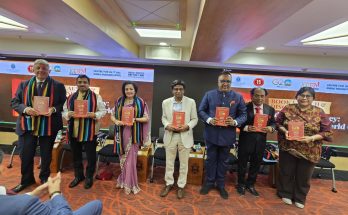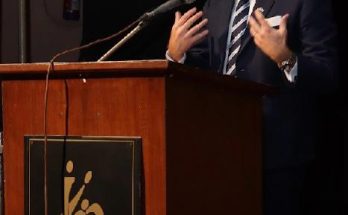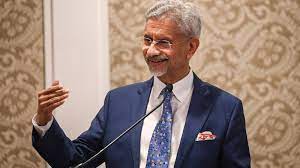A hundred years ago a small group of Indians living in America formed an Indian organisation called the “Hindustan Association of the Pacific Coast” in San Francisco. They published a magazine called ‘Ghadar’ (Revolution) and launched a movement that came to be known as the Ghadar movement. Their aim was to liberate India from the British rule by any means, including armed rebellion.
The Ghadar movement, largely forgotten in India, was an important element of the early part of the Indian freedom struggle. It does not find mention in most Indian history books, but was a unique movement that mobilised Indians living abroad to finance and mount an armed revolution in India to fight for its independence. Though the revolution eventually failed, the Ghadar movement, according to British records, was considered the most serious attempt to subvert the British rule in India.
The Ghadar movement is set to get due recognition with the Indian government’s plans to convert the old Ghadar headquarters in San Francisco into a museum and library. The plan to set up a Ghadar Museum and Library was announced by Prime Minister Manmohan Singh at the Pravasi Bharatiya Divas at Kochi in January while Finance Minister P. Chidambaram assured funds for the project in his budget speech in March.
Several local Indian organisations in the United States have, over the years, pressed for a Ghadar museum to commemorate the sacrifices of the Ghadarites. The Ghadar headquarters building has been in the possession of the Indian government ever since the Association handed over the property to the Indian embassy at the time of independence. The building was in a decrepit state when it was converted into a Ghadar memorial with the active assistance of the local Indian community in the mid-1970s. Indian groups and associations on the American west coast organised a day-long event in 2003, with former president K.R Narayanan as chief guest to mark the 90th anniversary of the Ghadar movement. Since then, there has been a persistent demand that a Ghadar Museum be set up in the centenary year of the rebel movement.
Indians began arriving in America in the early 1900s; they came through various ways as students, as farmers and workmen looking for work, and ex-servicemen, who had served with the British forces, searching for new opportunities. They were joined by radical thinkers who sought a free environment to voice their views for India’s emancipation from foreign rule. A decade later, the Ghadar Party was formed with an unlikely combination of members; they included students, workers, peasants, intellectuals and other groups, all of whom had come together to launch an agitation for India’s independence.
The Ghadar Party began its operations with a weekly magazine, Ghadar, that was published on November 1, 1913 from the Yugantar Ashram in San Francisco. It was first published in Urdu and Gurmukhi and then in Hindi and Gujarati. It also appeared occasionally in English, Bengali and Pashto indicating its wide appeal among Indians. The party moved its headquarters to 5 Wood Street after the property was purchased through donations from Indian workers. The Ghadar party president was Baba Sohan Singh Bakhna who arrived in the US to work as a labourer at a timber mill; the editor of Ghadar magazine was Lala Har Dayal who had been involved in trade union activities.
The movement began trying to raise awareness and give a voice to the demand for independence. The magazine urged Indians to unite and fight against British imperialism. It highlighted the pitiable plight of Indians under foreign rule. The Ghadar leaders continued their activities in the US and Canada, raising funds and distributing pamphlets and other material to propagate the cause. Many of their activities were carried out through the gurdwaras and other places where Indians gathered. They distributed their patriotic and nationalistic writings in several countries and raised funds from Indians living there. The Ghadar cause spread around the world, finding support from Indians living as far apart as France, Germany, Japan, China, Afghanistan, Argentina, Brazil, Panama, East Africa, South Africa, Fiji, Philippines, Malaya, Siam (Thailand) and Singapore.
After the World War l began, the Ghadarites started their armed rebellion. Several thousand Ghadarites reached India towards the end of 1914 through different routes and methods. They planned to carry out the fight and make contact with other revolutionary groups. But a large shipment of arms and ammunition was discovered and seized and many of the fighters were arrested as they tried to rouse villagers in India. The British colonial authorities put down the rebellion and constituted a special tribunal in Lahore to try the Ghadarites in what came to be known as the First Lahore Conspiracy trial. The ‘Ghadar babas’ were sentenced to death, life imprisonment or transportation for life.
There has been an impression in India that the Ghadar movement was predominantly a rebellion by the overseas Sikhs since the gurdwaras were a centre of the Ghadar activities in the US and Canada. But there were many people from other parts of the country associated with the movement. The list of Ghadar heroes includes Pandurang Sadshiv Khankhoje, Tarak Nath Das, Maulvi Barkatullah and Vishnu Ganesh Pingle.
The Ghadar movement was ahead of its time; the mass awareness and mobilisation that formed the backbone of the freedom struggle in the later decades had not taken place in the Indian countryside. Though the Ghadarites moved to the villages to motivate people and organize uprisings, they did not get much response from the rural folk.
Indian associations in the US plan to hold special events throughout the centenary year in Washington DC, New York, Los Angeles, Houston, Atlanta, Boston and Seattle that would culminate with a special memorial function in San Francisco on November 1, 2013. The conversion of the memorial into a museum and library would commence only after obtaining building permission from the city authorities. But the museum-cum- library would be a fitting tribute to the memory of the Ghadar babas who raised the banner of revolt many thousands of miles away from India.
Author Profile
Latest entries
 DiasporaOctober 27, 2014Why PM Modi’s voyage to Fiji matters
DiasporaOctober 27, 2014Why PM Modi’s voyage to Fiji matters CultureMarch 28, 2014Remembering the spirit of Ghadar revolution
CultureMarch 28, 2014Remembering the spirit of Ghadar revolution CultureSeptember 27, 2013Indian Americans: A Winning Journey
CultureSeptember 27, 2013Indian Americans: A Winning Journey CultureSeptember 23, 2013A passage to India: From Guadeloupe, with memories and longing
CultureSeptember 23, 2013A passage to India: From Guadeloupe, with memories and longing







